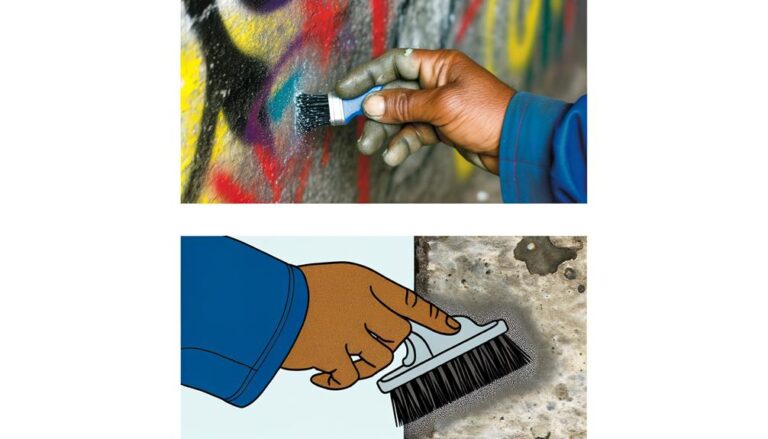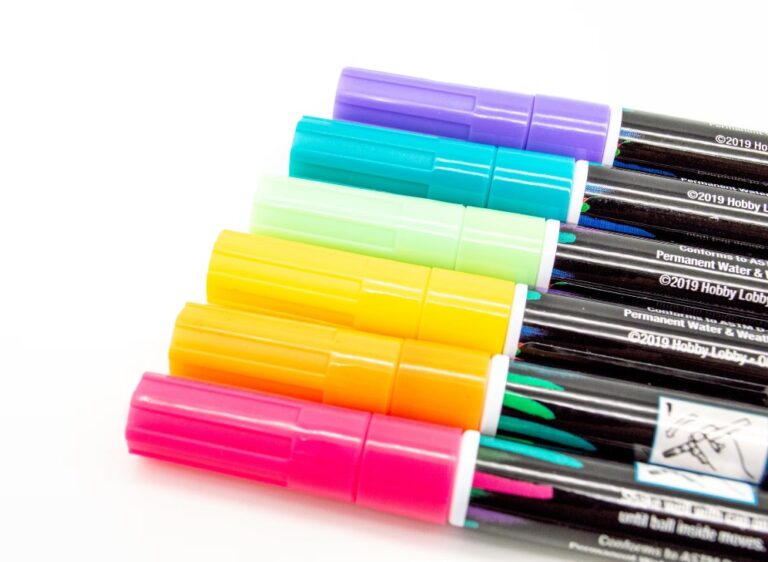It’s a common question asked by many do-it-yourselfers: can spray paint dry in the cold? The answer is yes, but there are a few things you need to know in order to get a successful outcome. First of all, it’s important to choose the right type of paint for your project.
There are many different types of spray paints on the market, and not all of them are created equal. Some are designed specifically for use in colder temperatures, so be sure to read the labels before purchasing. Once you have the right paint, it’s important to follow the directions on the can carefully.
In most cases, you’ll need to apply a primer before painting, and then allow it to dry completely before applying the top coat of paint. When painting in cold weather, it’s also important that you protect your work area from drafts.
It’s a common question – can spray paint dry in the cold? The answer is yes, but there are a few things to keep in mind. Cold temperatures can lengthen the drying time of paint, so be patient and give it plenty of time to dry thoroughly before using or moving anything.
It’s also important to make sure that the area you’re spraying is well-ventilated so that the fumes don’t linger. Other than that, just follow the directions on your paint can and enjoy your newly painted project!
Spray Paint Temperature Limit
Most people know that spray paint shouldn’t be used in cold weather, but did you know there’s a temperature limit? It’s actually not the freezing point that’s the problem – it’s when the temperature starts to rise. At about 50 degrees Fahrenheit, solvents in the paint start to evaporate too quickly, which causes the paint to dry before it hits the surface.
This results in an uneven coating and can even cause bubbles or blisters in the finish. So if you’re planning on doing some painting this spring, make sure the temperatures are above 50 degrees!
Spray Paint Temperature Celsius
Whether you are a beginner or a professional, understanding the different types of spray paint and their recommended temperatures is essential to getting the job done right. Not all paints are created equal and each has its own optimal working temperature. Here is a breakdown of the most popular types of spray paint and their ideal temperatures in Celsius:
– Lacquer: 20-24°C
– Enamel: 15-20°C
– Latex: 10-15°C
Lacquer is one of the most durable types of spray paint and is often used on metal surfaces. It requires a higher temperature to cure properly, so if you are using lacquer, make sure your workspace is at least 20°C. Enamel paint is also very durable and can be used on both metal and wood surfaces.
It has a lower curing temperature than lacquer, so 15-20°C will suffice. Latex paint is not as durable as the other two types but it is much easier to work with. It can be used on almost any surface but it needs to be applied at a lower temperature, around 10-15°C.
Now that you know what temperatures to use for each type of spray paint, you can get started on your project with confidence!
Best Temperature to Spray Paint Metal
When it comes to painting metal, the temperature can play a big role in the success of your project. In general, the best temperature to spray paint metal is between 60 and 80 degrees Fahrenheit. This range allows the paint to dry quickly and evenly, preventing any runs or sagging.
Of course, you’ll also want to consider the conditions on the day you’re painting. If it’s too hot or humid outside, it’s best to wait for another day.
How to Spray Paint in Cold
Spray painting in cold weather can be challenging, but it is possible with the right precautions. Here are a few tips to help you successfully spray paint in cold weather:
1. Choose the right paint.
Some paints are specifically designed for use in cold weather, so make sure to select one of these for your project.
2. Prepare your surface. Make sure that any surfaces you’ll be painting are clean and free of debris.
It’s also important to ensure that they’re properly primed before you start painting.
3. Use a heat lamp. If possible, set up a heat lamp near your work area to keep the temperature warm enough for the paint to adhere properly.
4. Apply multiple thin coats of paint rather than one thick coat. This will help prevent the paint from freezing or becoming too brittle in the cold weather conditions.
5. Allow adequate drying time between coats of paint.
Can I Spray Paint Indoors
If you’re wondering if you can spray paint indoors, the answer is yes! However, there are a few things to keep in mind to make sure the job goes smoothly.
First, make sure the room is well-ventilated.
Open windows and doors to get as much fresh air circulating as possible. You may also want to consider wearing a respirator mask to avoid inhaling fumes.
Second, lay down drop cloths or old newspapers on the floor to catch any overspray.
You don’t want your paint job ruined by stains on the carpet or floor!
Finally, be careful of any electrical outlets or wiring in the room. Cover them up with painters tape so you don’t accidentally spray them with paint.
With these tips in mind, indoor spray painting can be a breeze! Just remember to take your time and work in a well-ventilated area for best results.
How Long Does It Take for Spray Paint to Dry in Cold?
It can take anywhere from 1-24 hours for spray paint to dry in cold weather. The type of paint, the temperature and humidity all play a factor in how long it will take for your paint project to be complete.
Can It Be Too Cold for Spray Paint to Dry?
Yes, it can be too cold for spray paint to dry. If the temperature is below 50 degrees Fahrenheit, the paint will not dry properly. The paint will become tacky and eventually start to peel off.
What Temp Will Spray Paint Dry?
Spray paint typically dries within 15 to 30 minutes after application, depending on the type of paint, the ambient temperature and humidity, and the surface being painted.
Conclusion
It’s a common question asked by many do-it-yourselfers: can spray paint dry in the cold? The answer is yes, but there are a few things you need to know in order to get the best results.
Cold temperatures can actually help the paint to dry faster than usual, but it can also make the paint more brittle and prone to chipping.
In order to prevent these problems, it’s important to use a thinner paint and apply several light coats rather than one heavy coat. It’s also a good idea to keep the area well ventilated while the paint is drying.

